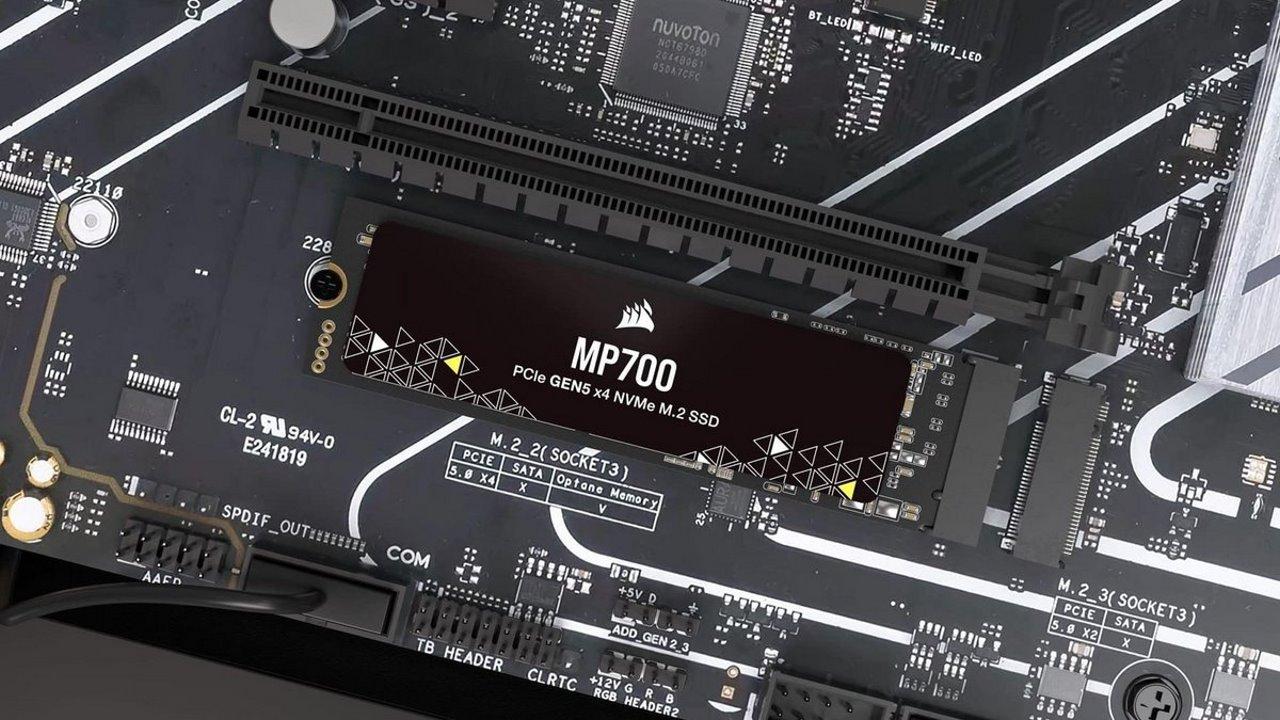Without a doubt, few people today build a computer that doesn’t have an M.2 SSD as the primary storage unit. Even laptops use these storage units because of the little space they take up and the good performance they offer.
What’s changing with PCIe 5.0
You should know that the M.2 format is standard. This is done to avoid each manufacturer using different dimensions or specifications and there being compatibility issues. It simplifies the design work of the motherboard manufacturer and provides the user with a wide catalog of solutions.
The new M.2 SSD drives based on PCIe 5.0 interface They are distinguished by their transfer speeds. These units can reach speeds
This is the only difference between the two types of SSD storage drives. No added technology makes a difference or increases capabilities. What we are seeing are price increases, since for the same capacity, an M.2 PCIe 5.0 SSD can cost more than twice as much as a PCIe 4.0 unit.
But there’s a bigger reason why SSD makers aren’t releasing PCIe 5.0 drives: temperature issues. We’ve already seen how PCIe 4.0 units require powerful heatsinks to remove excess heat. The problem arises in these new units, even more serious temperature problems due to the high speeds.
PCIe 5.0 interface drives “problemthermal limitation» really serious. This circumstance has the effect that, when certain temperatures are reached, the unit protects itself by reducing its performance. For these units, this occurrence is completely normal, due to the high transfer speeds. This forces manufacturers to use active heatsinks, which must include a fan.
It is true that some devices are marketed with passive heatsinks (fairly large) and even without heatsinks. Logically, in a unit without a heatsink, this problem will be constant and will rarely cause the unit to operate at its maximum capabilities. If the unit has a passive heatsink, the problem will not be as constant, but it will be common. Furthermore, units equipped with fans occasionally suffer from this problem, especially in the event of large read/write cycles.
Will we see more units in the future?
An interesting and difficult question to answer. In fact, the speeds offered by the PCIe 4.0 interface are more than sufficient for the average user. If you work with large files, like photographers or video editors, you might be interested in a PCIe 5.0 SSD to reduce transfer or compilation times for your work.
For now, it looks like we won’t see a flood of new SSDs featuring this new interface. Thermal throttling in these units is very difficult to resolve today. The fact that these storage units are normally installed close to the graphics cards (even underneath) doesn’t help either. Ultimately, a bigger temperature problem is generated, because heat dissipation is complicated at this point and ends up “absorbing” some of the heat from the graphics.
Yet, as we have commented on some occasions, the problem lies in the design of the M.2. If a design closer to the DIMM format of RAM were developed, this problem would not be so serious. Heat could be dissipated more efficiently and even significantly increase capacity without much effort.









